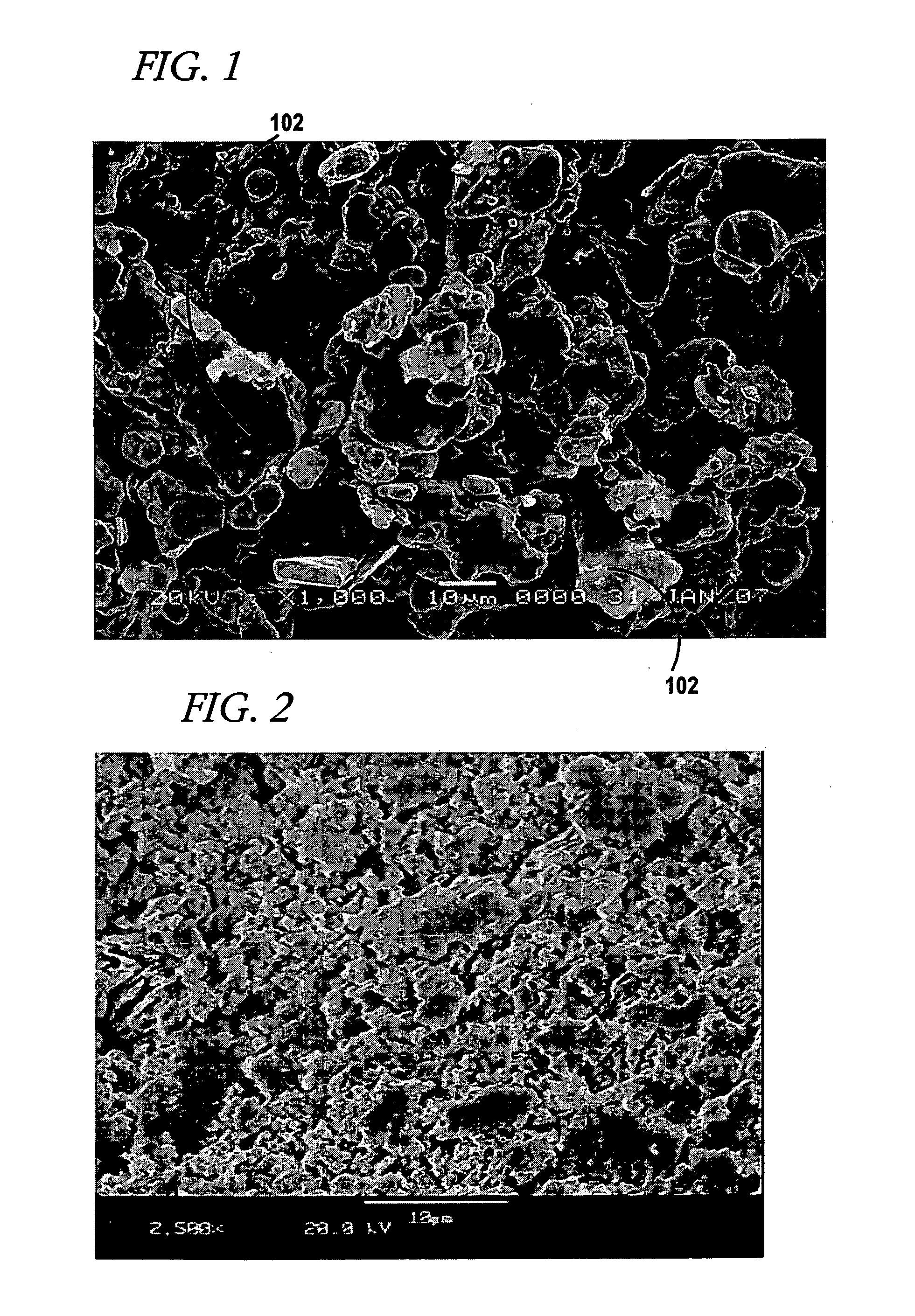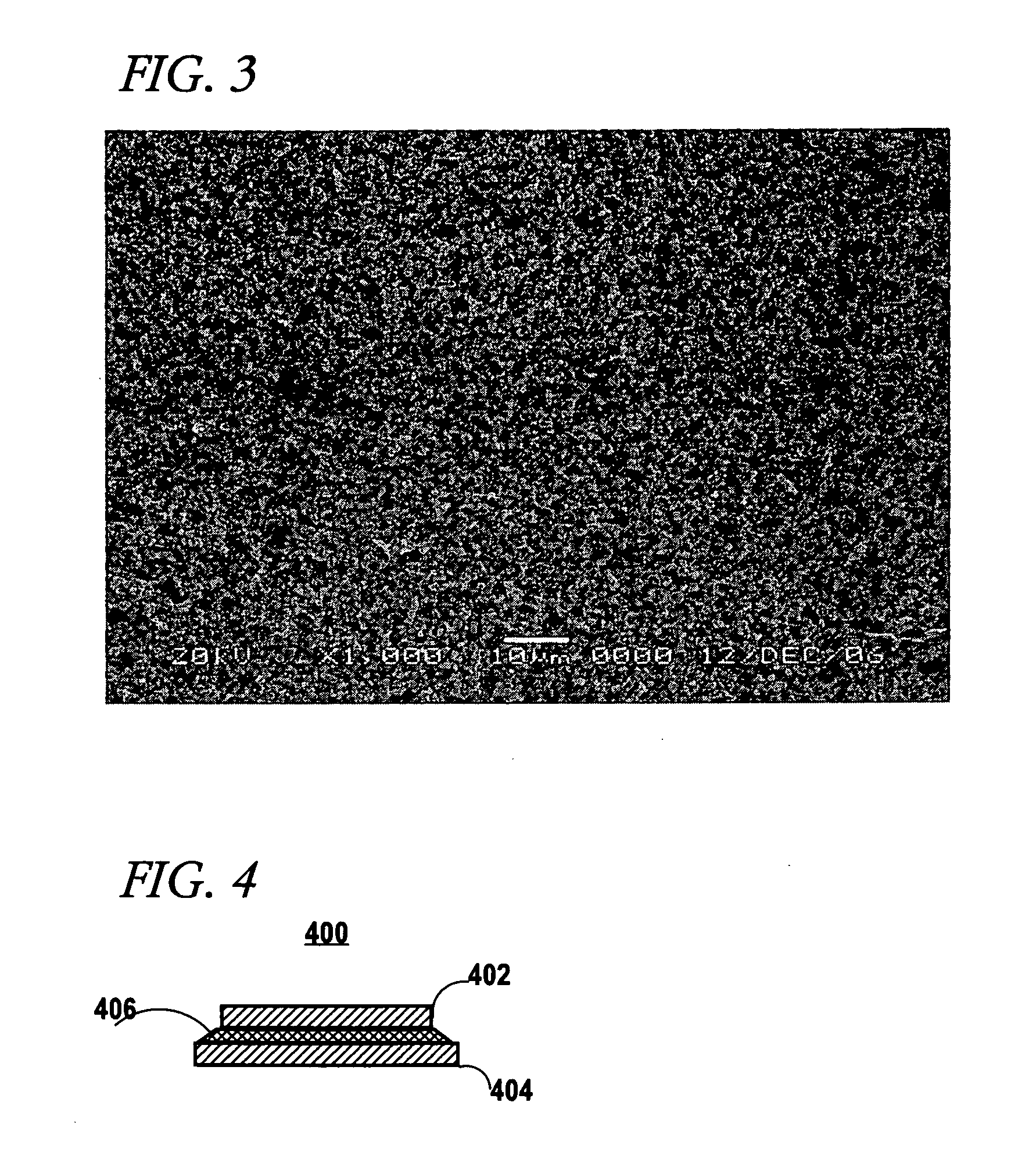Adhesives With Thermal Conductivity Enhanced By Mixed Silver Fillers
a technology of thermal conductivity and filler, which is applied in the direction of non-macromolecular adhesive additives, synthetic resin layered products, transportation and packaging, etc., can solve the problems of not being able to adapt to the bonding die in plastic packages, limiting the amount of heat dissipation in plastic packages, and the processing temperature is too high for use with plastic laminate packages, etc., to achieve good storage characteristics, easy dispensing and processing, and bulk thermal conductivity
- Summary
- Abstract
- Description
- Claims
- Application Information
AI Technical Summary
Benefits of technology
Problems solved by technology
Method used
Image
Examples
examples 1-7
[0056]This invention is now illustrated by certain representative embodiments listed in Table I below. The examples are intended to be illustrative only, and modifications and equivalents of the invention will be evident to those skilled in the art. Examples 1-7 listed in Table I had a Cycloaliphatic epoxy resin binder, alcohol solvent, fumed silica and ethyl cellulose, the latter two being rheological additives. The thermally conductive adhesives of examples 1-7 were prepared by adding the resin to the solvent, then adding the silver powder filler and then mixing. Test samples using the thermally conductive adhesives were prepared by using the thermally conductive adhesive in an amount of 75 μL / in.2 (11.6 μL / cm2) to bond a 0.250 in. (6.35 mm) silicon die to an alumina substrate, drying the samples at 110° C. for 60 minutes followed by current the samples at 200° C. for 30 minutes. Samples thus prepared were used for shear force adhesion testing.
[0057]To test for thermal conductivit...
PUM
| Property | Measurement | Unit |
|---|---|---|
| mass ratio | aaaaa | aaaaa |
| tap density | aaaaa | aaaaa |
| tap density | aaaaa | aaaaa |
Abstract
Description
Claims
Application Information
 Login to View More
Login to View More - R&D
- Intellectual Property
- Life Sciences
- Materials
- Tech Scout
- Unparalleled Data Quality
- Higher Quality Content
- 60% Fewer Hallucinations
Browse by: Latest US Patents, China's latest patents, Technical Efficacy Thesaurus, Application Domain, Technology Topic, Popular Technical Reports.
© 2025 PatSnap. All rights reserved.Legal|Privacy policy|Modern Slavery Act Transparency Statement|Sitemap|About US| Contact US: help@patsnap.com



